While it can be difficult to tell them apart at first, there are some significant differences between mustard greens vs collard greens. But what might some of those differences be, and how do both of these individual plants prefer to grow in the average home garden? And, more importantly, how can you cook with both of these plants successfully?
In this article, we will compare and contrast mustard greens and collard greens so that you can fully understand the differences between them. We will address what they look like physically as well as how to grow them. In addition, we will go over the origins of both of these plants and what they taste like. Let’s get started and compare these two greens now!
Comparing Mustard Greens vs Collard Greens
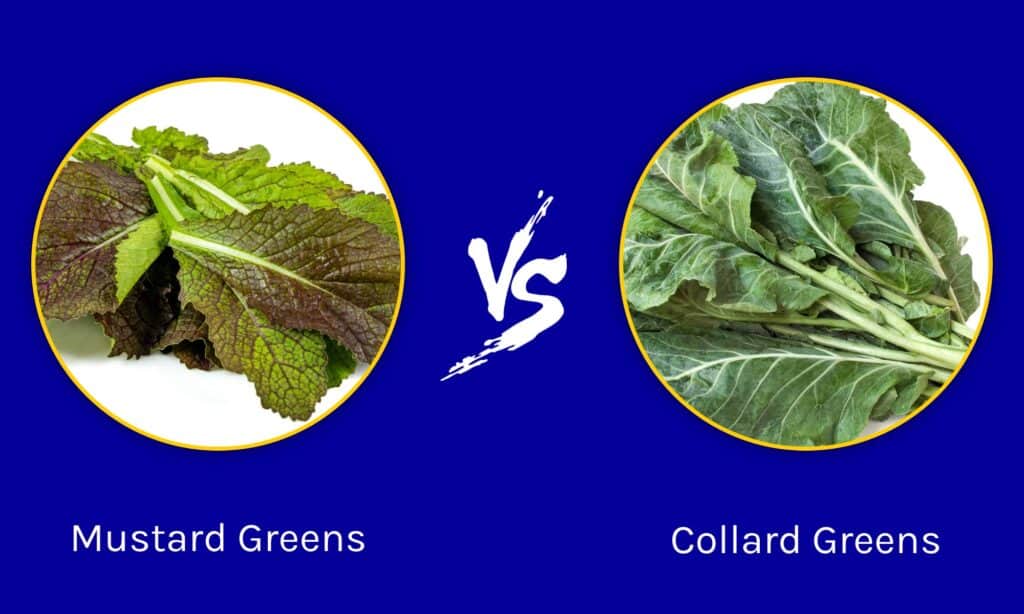
| Mustard Greens | Collard Greens | |
|---|---|---|
| Scientific Classification | Brassica juncea | Brassica oleracea |
| Description | Rounded or ruffled light green leaves found on a variety of mustard plants. Found in vibrant green shades or purplish red, and smaller than collard greens overall. Plants reach up to 2 feet tall | Large, paddle-like leaves in a deep green shade. White veins are evident throughout the leaves, and the stems are woody. Primarily smooth edges. Plants reach an average of 3 feet tall and wide |
| Uses | Used in a variety of cuisines around the world, particularly in soul food cuisines. Prized for its ease of growing, as it produces many leaves per crop | Used in a variety of cuisines, particularly soul food. Popular given its overall hardiness compared to a number of other nutritious greens |
| Origin and Growing Preferences | Native to India, but cultivated around the world; mustard plants prefer full sun and the mellow temperatures of fall and spring | Native to the Mediterranean, but cultivated around the world; grow in full sun and plant in the springtime, as they can handle the heat of summer better |
| Flavor and Nutrition | Peppery bite with plenty of flavor; a good source of manganese and vitamin C | Mild flavor and texture, similar to spinach; a good source of calcium and vitamin K |
Key Differences Between Mustard Greens vs Collard Greens
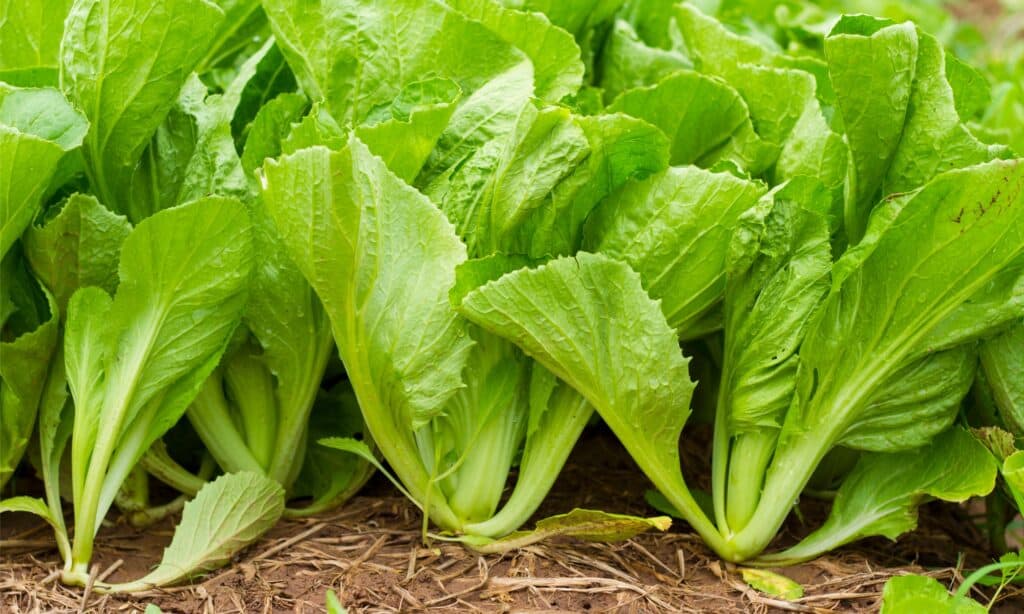
The leaves of collard greens are larger and shaped like paddles compared to the ruffled leaves of mustard greens.
©iStock.com/trangiap
There are a number of key differences between mustard greens and collard greens. For example, mustard greens are more textured compared to the smooth feel of collard greens. The majority of collard greens grow larger than mustard greens. In addition, the flavor of mustard greens is more intense and peppery compared to the mild flavor of collard greens.
Let’s go over all of these differences and a few more in detail now.
Mustard Greens vs Collard Greens: Classification
There’s no denying that collard greens and mustard greens have a few similarities, and this is likely because they belong to the same plant family. However, they are both extremely distinct species within this family. For example, mustard greens that are typically consumed are classified as Brassica juncea, while collard greens are typically classified as Brassica oleracea.
Mustard Greens vs Collard Greens: Description
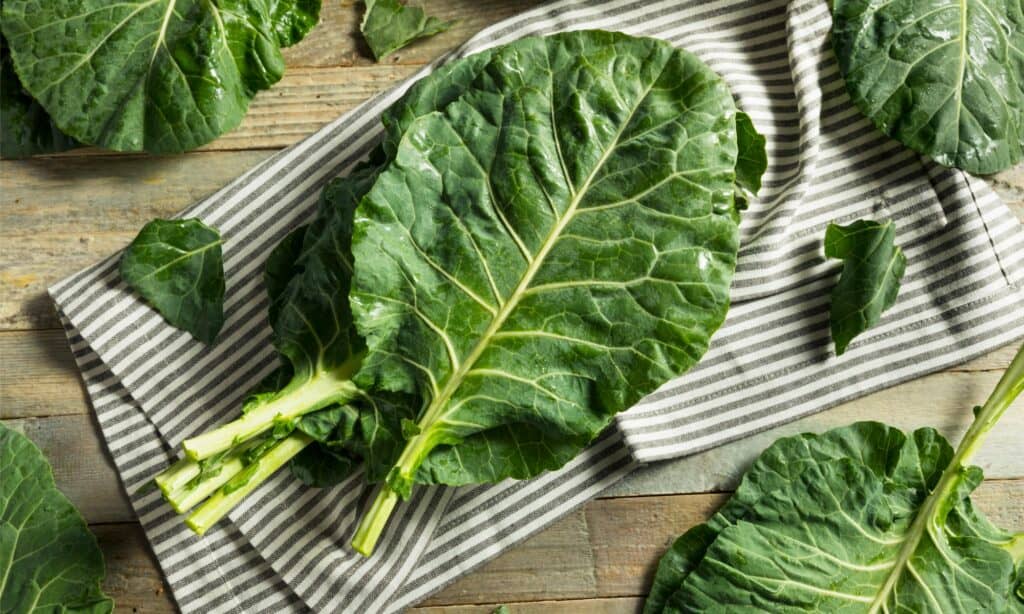
While the texture of collard greens is smoother compared to the jagged texture of mustard greens, both of these plants cook down beautifully.
©iStock.com/bhofack2
Once you know what to look for, it’s fairly easy to tell mustard greens apart from collard greens. For the most part, the leaves of collard greens are larger and shaped like paddles compared to the ruffled leaves of mustard greens. In addition, most mustard greens are a lighter shade of green compared to the dark green and veined appearance of collard greens.
When it comes to the plants themselves, collard greens grow much larger than the average mustard greens plant. While the texture of collard greens is smoother compared to the jagged texture of mustard greens, both of these plants cook down beautifully. Depending on the variety you have at your local grocery store, some mustard greens are found in shades of reddish-purple, while collard greens remain green across all varieties.
Mustard Greens vs Collard Greens: Uses
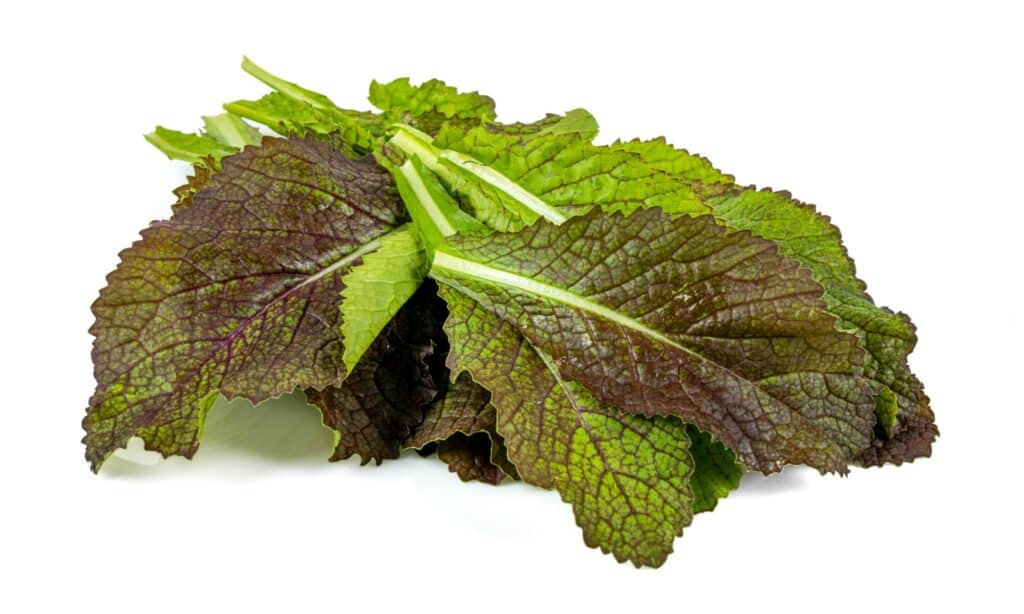
Collard greens grow much larger than the average mustard greens plant.
©iStock.com/yalcinsonat1
One of the main ways in which mustard greens and collard greens overlap is in their uses. Both of these plants are popular in a variety of cuisines, particularly soul food around the world. However, mustard greens often produce more leaves compared to collard greens, though the average collard greens plant thrives in higher temperatures compared to mustard greens.
Mustard Greens vs Collard Greens: Origin and How to Grow
While they are both cultivated around the world, mustard greens and collard greens have different locations of origin. For example, mustard greens are native to India, while collard greens are native to the Mediterranean. Both of these crops prefer to be planted in full sun and well-draining soil, though mustard greens enjoy colder temperatures compared to the hardy collard greens plant.
Mustard Greens vs Collard Greens: Flavor and Nutrition
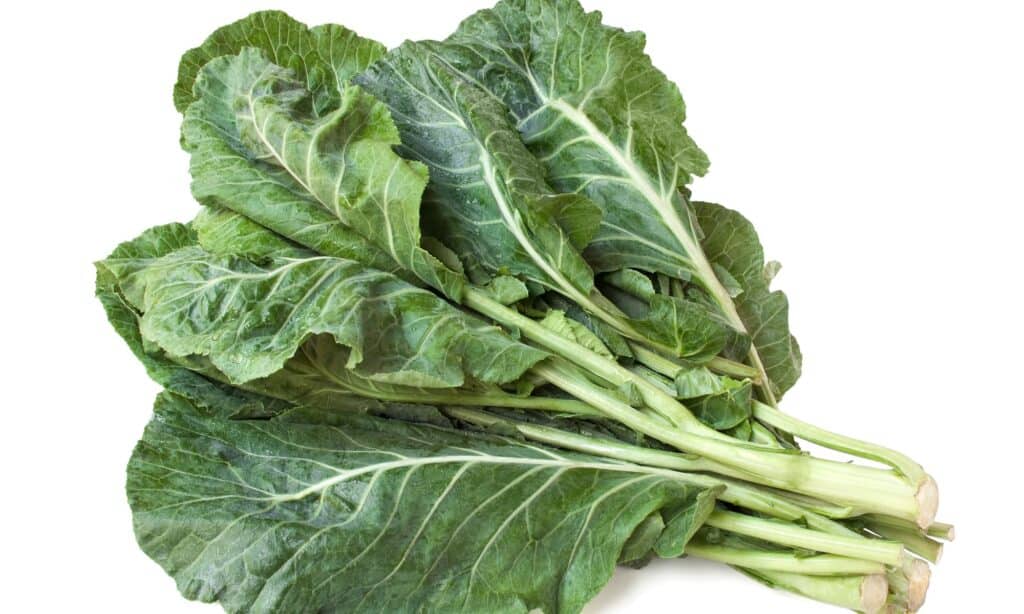
Mustard greens are much more peppery and flavorful in their taste compared to collard greens.
©iStock.com/EvergreenPlanet
If you have the opportunity to taste mustard greens and collard greens in your own kitchen, you will notice some distinct differences right away. For example, mustard greens are much more peppery and flavorful in their taste compared to collard greens. In fact, collard greens are frequently compared to spinach or kale, given their mild and smooth flavor. Nutritionally, mustard greens have more value compared to collard greens, though both are high in a variety of vitamins and minerals!
Up Next:
- Swiss Chard vs. Collard Greens: What’s the Difference?
- Turnip Greens vs. Collard Greens: What’s the Difference?
The photo featured at the top of this post is © iStock.com/trangiap
Thank you for reading! Have some feedback for us? Contact the AZ Animals editorial team.






